Ginger an amazing crop, used all over the world, and today, I want to share exactly how I grow it in containers to get an epic harvest.
I’ll also show you how I turn my homegrown ginger into ginger powder, a super useful ingredient in the kitchen.
| Aspect | Fact / Figure |
|---|---|
| Botanical Name | Zingiber officinale |
| Type of Plant | Tropical perennial (grown as annual in temperate climates) |
| Time to Harvest | 4–5 months after planting |
| Ideal Container Depth | 8–12 inches (shallow but wide) |
| Rhizome Planting Depth | 0.5 to 1 inch below soil surface |
| Best Planting Time | Early spring (after last frost, or indoors before transplanting) |
| Preferred Temperature | 75–85°F (24–29°C) |
| Humidity Needs | High (60% or more is ideal) |
| Sunlight | Partial to filtered sunlight (4–6 hours daily) |
| Watering Frequency | Keep soil consistently moist but not waterlogged |
| Soil pH | 6.0–6.5 (slightly acidic) |
| Fertilizer Needs | Monthly feeding with balanced or nitrogen-rich fertilizer |
| Yield per Container | 500g to 1.5kg of fresh ginger, depending on container size and growing time |
| Dehydration Time | 3–4 hours at 115°F (in a dehydrator) |
| Powder Yield | ~100g of dried ginger from 1kg of fresh rhizome (approximate) |
| Storage Life (Powdered) | 6–12 months in airtight, cool, dark conditions |
Also Read: How To Plant a Tomato: My Simple Method
What Is Ginger, Really?
Most people call it a root, but that’s not actually correct. What we harvest is a rhizome, which is a modified underground stem. That’s what grows underground and stores energy for the plant.
I usually buy my ginger from the grocery store. Here’s what I look for:
- Healthy, large chunks
- Eyes or buds on the surface (sometimes already sprouting)
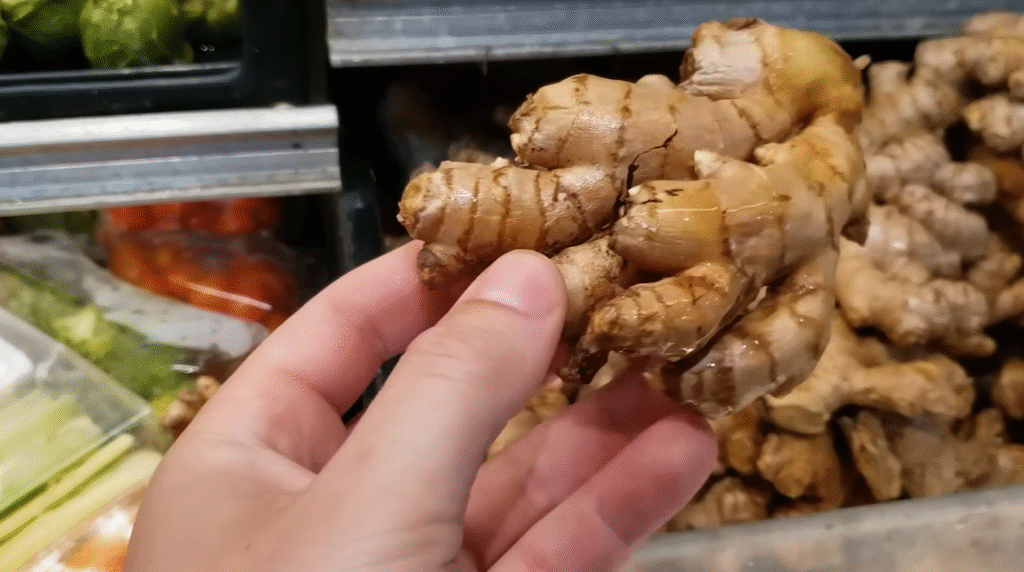
The bigger the piece you plant, the more sprouts you get. And more sprouts mean:
- More shoots above ground
- More rhizome growth below
- Faster growth
- Bigger harvests
Choosing the Right Container

When I plant ginger, I always think about how it grows. Ginger rhizomes spread horizontally, not deep down. That’s why I recommend a wide, shallow container instead of a narrow, deep one.
Here’s what I use:
- Wide and shallow pot
- High-quality potting mix
- Loose and rich in organic matter
Planting Steps

- Choose a healthy piece of ginger.
- Press it lightly into the soil.
- Cover it with half an inch to three-quarters of an inch of soil.
- Water it just enough to moisten the soil.
It doesn’t need a lot of water at this stage, there are no roots yet. I usually check to see if the top 2 inches of soil are moist.
Optional Tip
You can pre-sprout ginger in water before planting. Just place it in a bowl of water until roots and shoots appear. But honestly, I usually plant it straight into the soil. It works either way.
Where to Place the Container
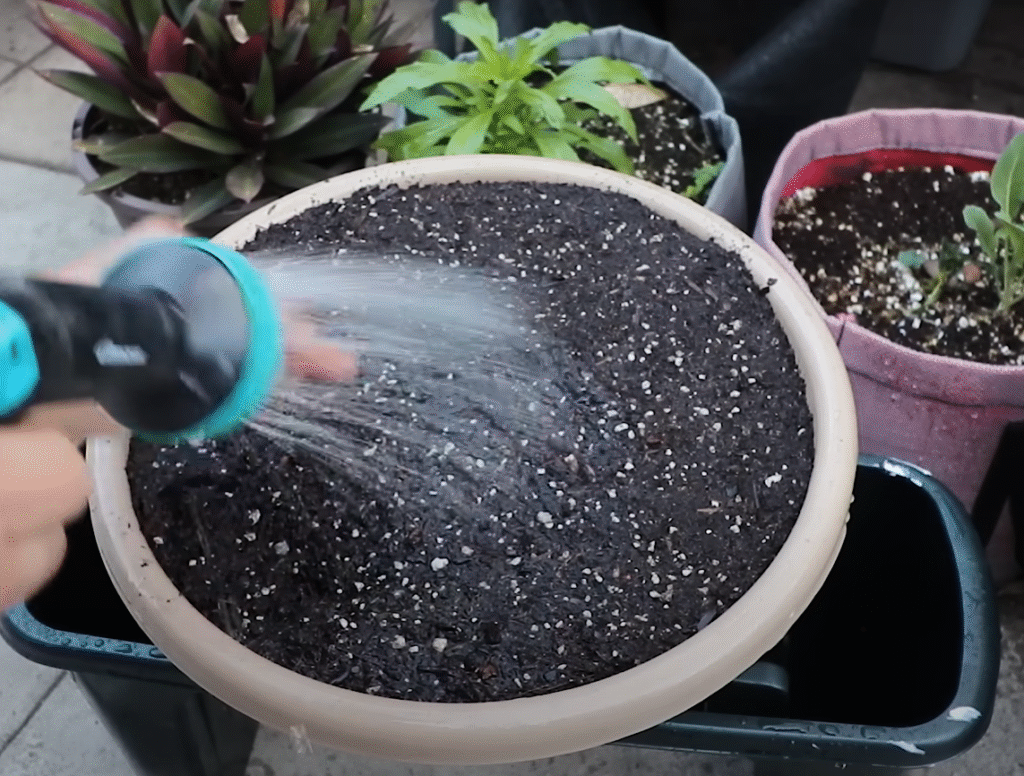
Ginger comes from Southeast Asia, which means it loves:
- Warm temperatures
- High humidity
- Moist soil
So I usually start it indoors in early spring. Especially if you’re in a cold area with frost, it’s best to:
- Start it indoors
- Wait for the first shoots to appear
- Move it outside when the weather warms up
This is how it’s done in commercial farms too, timed with the spring rains or monsoon season.
Common Problems and How I Fix Them
Ginger is pretty simple to grow if you match the conditions it likes. But here are some problems I’ve faced and how I solved them:
| Problem | Cause | Solution |
|---|---|---|
| Browning tips | Dry soil | Water more or add mulch to hold moisture |
| Yellowing leaves | Lack of nutrients | Add organic fertilizer (granular or liquid) |
| Rhizome rotting | Too much water | Reduce watering and improve drainage |
| Flowering | Natural plant behavior | Nothing to worry about, even flowers are edible |
Caring for Growing Plants
Once the ginger starts sprouting, I usually:
- Add 1–2 inches of mulch to hold moisture (especially in dry climates)
- Keep the container in a warm, moist place
- Reapply mulch around 45–90 days after planting
You can even use the leaves—they have a wonderful fragrance.
When and How to Harvest
Ginger takes time. I usually wait 4 to 5 months before my first harvest.
If you live in a frost-free area, you can:
- Gently harvest a few chunks at a time
- Leave the rest to keep growing
If the cold season is coming, I harvest the whole plant before frost damages it.
After harvest, I clean the ginger and either:
- Use it fresh
- Store it in a cool, dark place (like a root cellar)
- Replant it the next season
Bonus: Making Ginger Powder
I love using my garden harvest in the kitchen, and ginger powder is one of my favorite ways to use homegrown ginger.
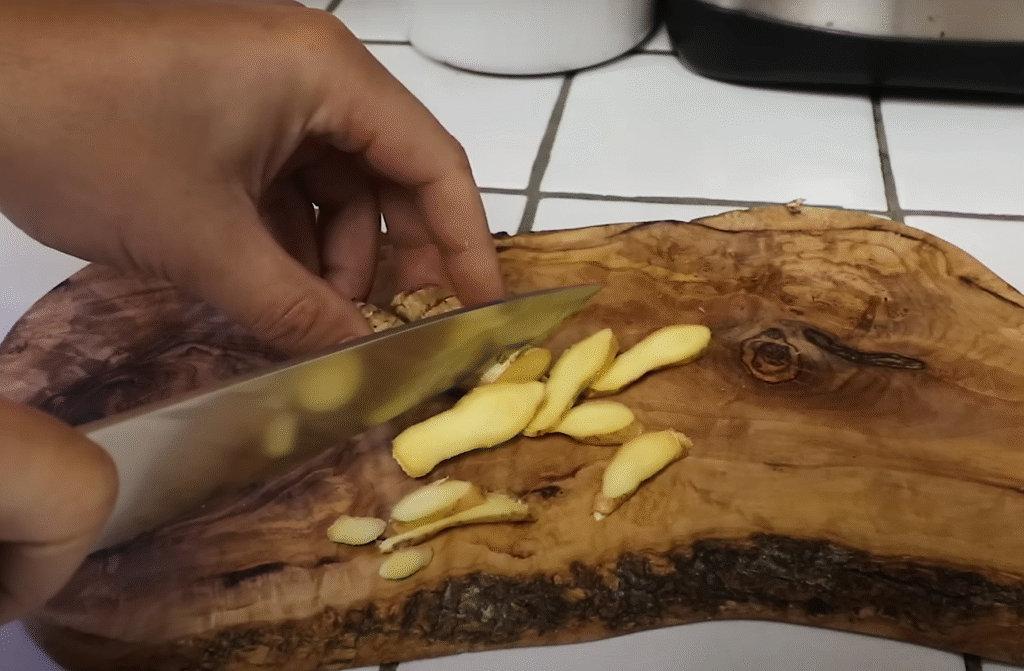
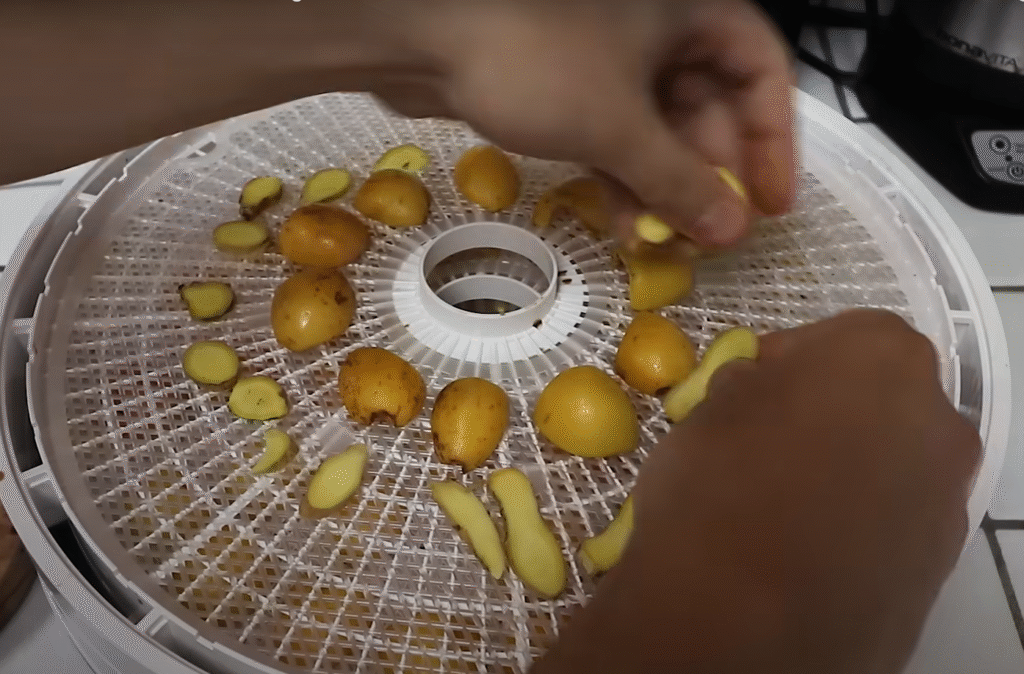
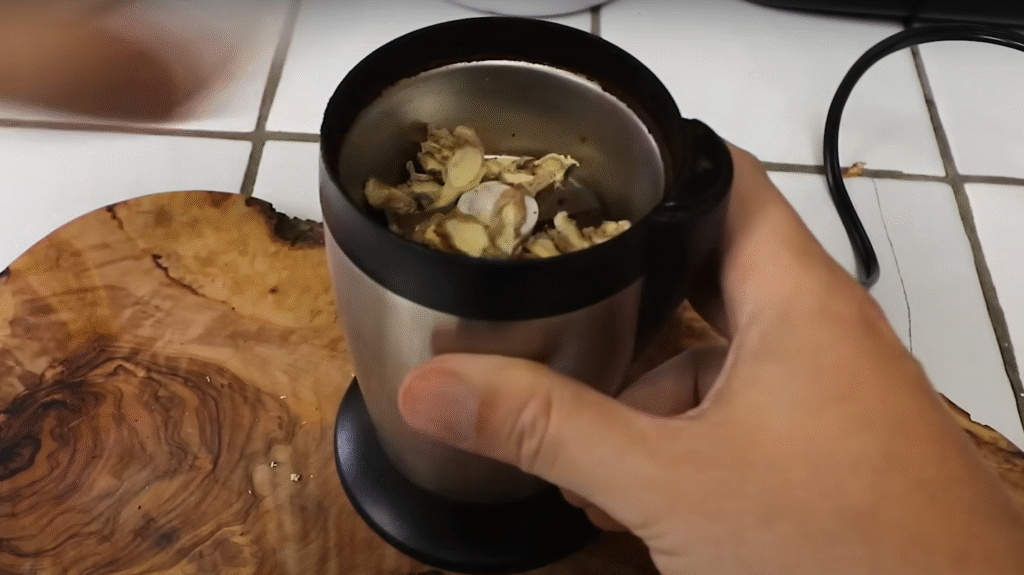
How I Make It
- Wash and scrub the ginger thoroughly.
- Slice it thin and evenly.
- Use a dehydrator at around 115°F for 3–4 hours, until it snaps when bent.
- Grind the dried slices in a spice grinder.
What I love about this method is that it turns ginger into a powerful ingredient. I use it in:
- Teas
- Baking
- Seasonings
And it stores easily for months.
That’s the full journey, from a store-bought ginger rhizome to a powdered spice in my kitchen. It’s one of the easiest and most rewarding plants I grow.
So if you’re thinking about growing something new, I highly recommend giving ginger in containers a try.
Frequently Asked Questions: Growing Ginger in Containers
1. Can I grow ginger indoors all year round?
Yes, if you have a warm spot with filtered sunlight and keep the soil moist, you can grow ginger indoors year-round. It needs warmth and humidity, just like its natural tropical home.
2. What type of ginger should I grow?
Most people grow Zingiber officinale, the common edible ginger. Avoid ornamental varieties like Alpinia unless you’re growing for looks, not for eating.
3. How do I know when ginger is ready to harvest?
Look for yellowing leaves and stems that start to dry back. This usually happens 4 to 5 months after planting. That’s your sign the rhizomes are mature.
4. Can I regrow ginger from harvested pieces?
Yes. Just save a few healthy chunks with “eyes” and plant them again. I always keep a few pieces back for the next growing season.
5. How do I store fresh ginger after harvest?
Clean it well and store it in a cool, dark, and dry place. You can also keep it in the fridge wrapped in paper towels or freeze it for longer storage.
6. Why isn’t my ginger sprouting?
It may be too cold or too dry. Ginger needs warmth (above 70°F), moist soil, and time. Sometimes it takes 2 to 4 weeks to see any sprouts.
7. What pests or diseases should I watch out for?
Ginger is generally hardy, but fungal rot, aphids, and spider mites can show up. Avoid overwatering, use good soil, and check leaves often.
8. Should I fertilize my ginger plant?
Yes. Ginger loves nutrients. Use a balanced organic fertilizer or a nitrogen-rich one once a month to boost healthy growth.
9. Can I grow ginger from grocery store pieces?
Absolutely. Just make sure it hasn’t been treated with growth inhibitors. Look for fresh pieces with visible eyes or buds.
10. How much ginger can I expect from one container?
From a single wide pot, you can usually harvest 500g to 1.5kg of ginger, depending on how long you grow it and how well you care for it.
Happy gardening, and keep on growing. Also Comment below what you miss about this information!


